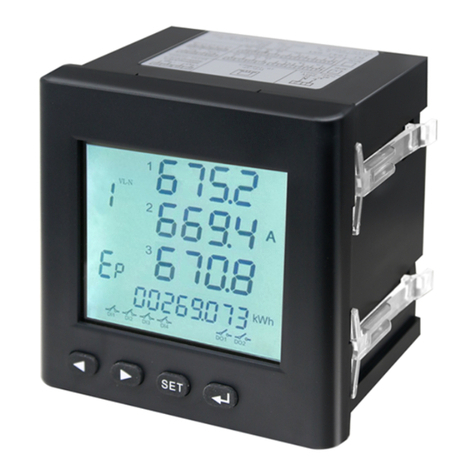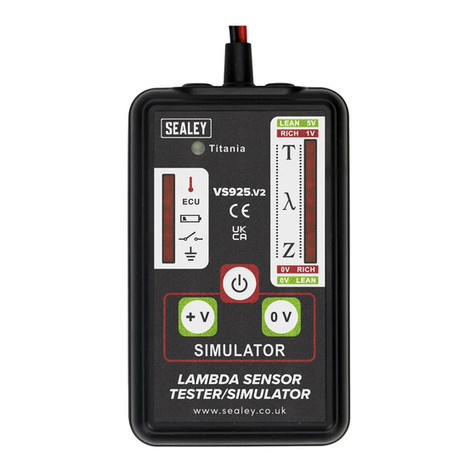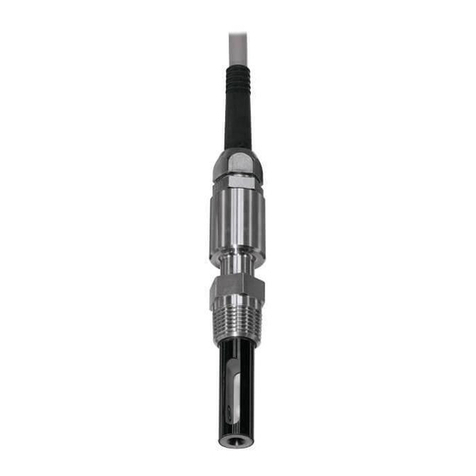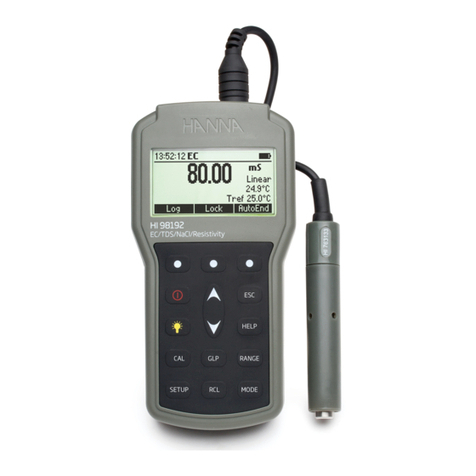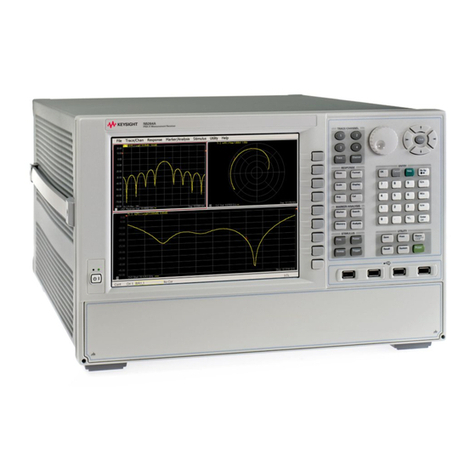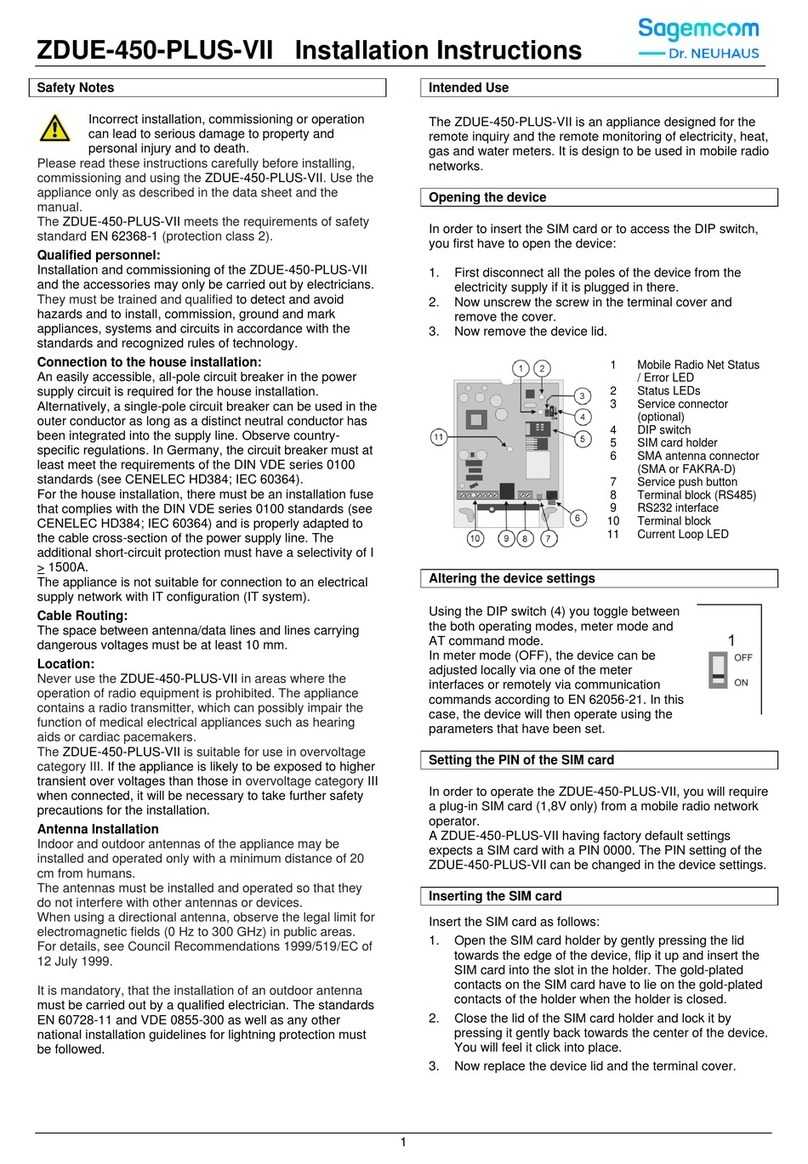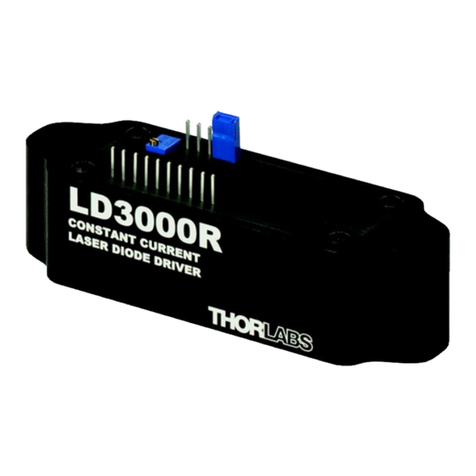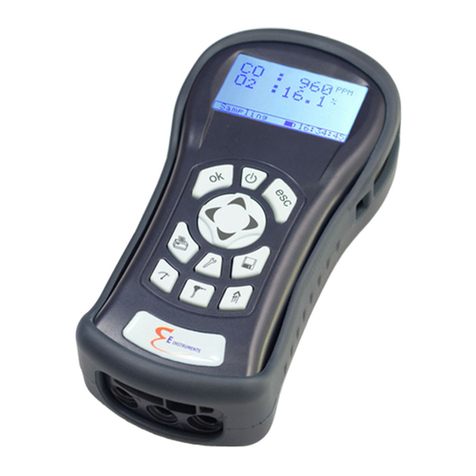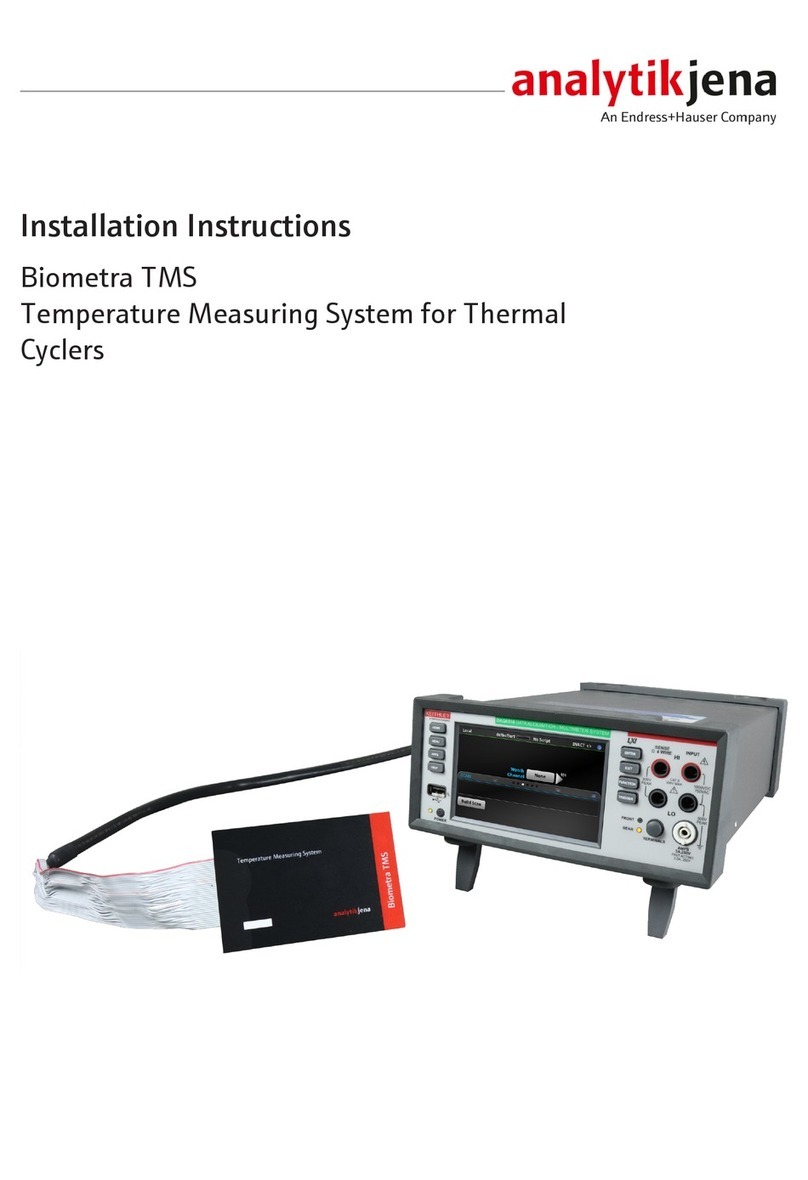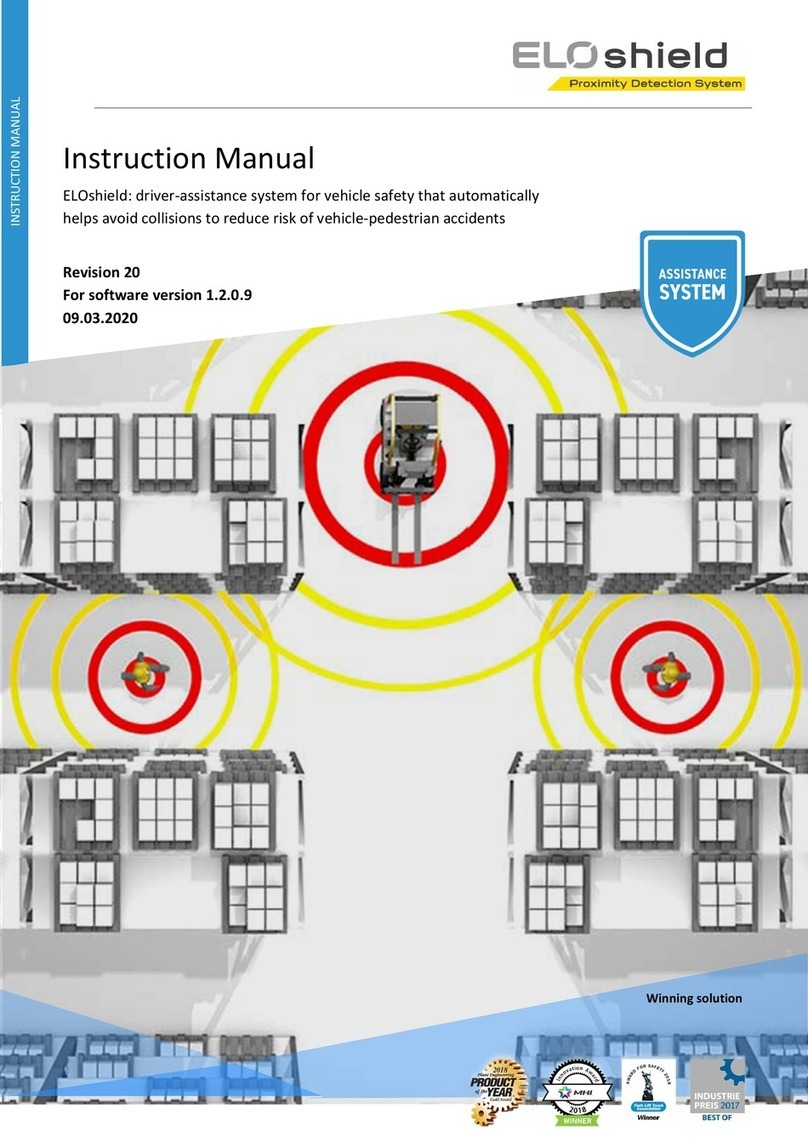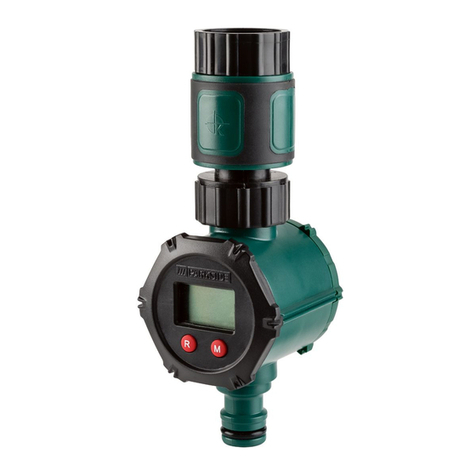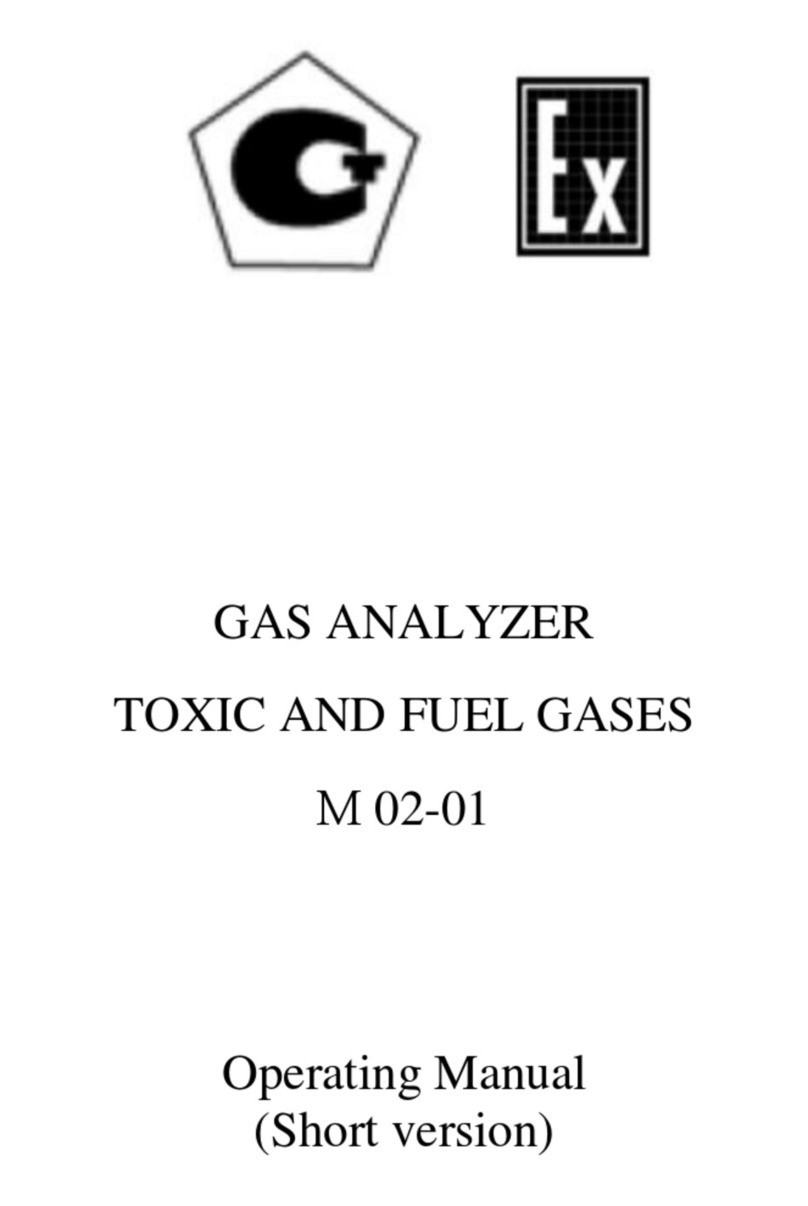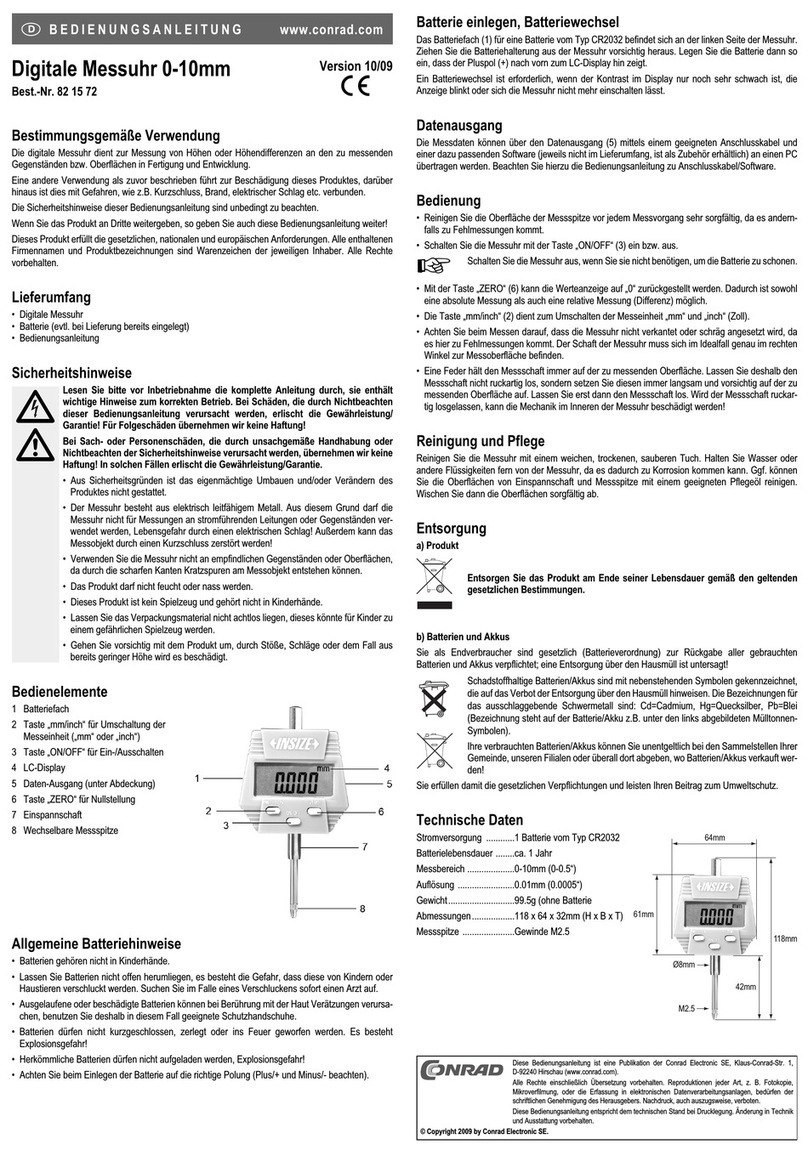Flomec D-40 User manual

I N S T R U C T I O N M A N U A L
Model: 1/2” (D-40)
Medium Capacity positive displacement
Pulse flowmeters
OVAL GEAR

Index / contents 1
1.0 General Page
1.1 Overview 2
1.2 Operating principal 2
1.3 Specifications 3
2.0 Installation
2.0 Mechanical installation 4
2.0.1 Meter & totaliser orientation 4
2.1 Flow conditioning & locations 5
2.2 Electrical Installation 5
2.2.1 Instrument Cable 6
2.2.2 Hazardous Area Wiring 6
2.3 Pulse output selection for pulse meters 6
2.3.1 Hall effect sensor output 6
2.3.2 Reed switch output 6
2.4 Calibration K-factor 6
3.0 Commissioning 7
4.0 Maintenance
4.0 Maintenance 8
4.1 Disassembly of meter & exploded view 8
4.2 Inspection 9
4.3 Re-assembly of meter 9
4.4 Spare parts list 10
5.0 Fault Finding 11
5.1 Trouble shooting 12

2 General
1.1 Overview
The Oval Gear meter is a precise positive displacement flowmeter incorporating a pair of oval geared rotors.
These meters are capable of measuring the flow of a range of clean liquids such as fuels, fuel oils & lubricating
liquids.
The flowmeter is available with a pulse output only for safe or hazardous areas. The meter also has a flow rate
register option with either RT40 (option E) for safe areas or an intrinsically safe RT12 (option I) for hazardous
areas. Both these totalisers have pulse output capabilities of interfacing to most monitoring and control
instrumentation. The RT12 instrument also has monitoring and control output options 4-20mA, scaled pulse and
flowrate alarms.
Both RT12 and RT40 options have multiple display units (kgs, Litres, lbs, Gal and m³) and can show
instantaneous flow rate and total flow values
1.2 Operating Principle
The Oval gear are positive displacement flowmeters where the passage of liquid causes two oval geared rotors to
rotate within a precision measuring chamber and with each rotation a fixed volume of liquid is displaced passing
through the meter. Magnets embedded within the rotors initiate a high resolution pulse train output. The pulse
output can be wired directly to process control and monitoring equipment or can be used as an input to
instruments supplied with or fitted directly to the meter.
The benefits of this technology allow precise flow measurement and dispensing of most clean liquids irrespective
of their conductivity, with other liquid characteristics having nil or minimal effect on meter performance. This
metering technology does not require flow profile conditioning as required with alternative flow technologies
making the installation relatively compact and low cost.
OPERATION :
Liquid travels around the crescent
shaped chambers created by the
rotational movement of the rotors
liquid exits the
measuring chamber
liquid in transit
flow
liquid entering
measuring chamber

Specifications 3
1.3 Specifications
Model Prefix
D-40
Nominal size (Inches)
15mm (1/2")
*Flow range - (LPM) Litres/min
1 ~ 40
- (GPM) USGal/min
0.26 ~ 10.6
Accuracy @ 3cp
±0.5%
Repeatability
typically ±0.03% of reading
Temperature range
-20⁰C ~ +80⁰C (-4⁰F ~ +176⁰F)
Maximum pressure; Bar (PSI)
40 (580)
(threaded meters)
Protection Class
IP66/67
Display
flowrate total (accumulative & resettable)
Recommended filter
150microns (100mesh)
Electrical
Nominal output resolution
pulses per litre (pulses per gallon) - Nominal
Hall Effect (E register only)
168 (636)
Reed
84 (31.8)
Reed switch output
30vDC x 200mA max
Hall Effect output (NPN)
3 wire open collector, 5 ~24vDC, 20mA max
* Maximum flow is to be reduced as viscosity increases, see flow de-rating guide
* Maximum flow may be increased by 10% for intermittent refueling periods

4 Installation
2.0 Mechanical Installation Prior to installing the meter check that :
•The fluid is compatible with the meter materials of construction using appropriate information such as
fluid compatibility charts and site experience.
•The application and process conditions are compatible with the meter specifications. Minimum and
maximum flows are within the meter specified range including any in-situ cleaning processes. When
metering viscous liquids the maximum allowable flow may need to be reduced to ensure the pressure
drop across the meter does not exceed 100 kPa (1 Barg, 15 PSIG).
•The process temperature and pressure does not exceed meter ratings.
•The meter is not exposed to process temperatures and pressures that will cause the liquid medium to
gasify (flash) within the meter.
2.0.1 Flow Conditioning and Locations
Strainer : It is recommended to INSTALL a 100mesh (150 micron) strainer immediately upstream of (prior to) the
meter. Strainers are available from the factory.
Flow conditioning : The flowmeter does not require any flow conditioning, therefore straight pipe runs before or
after the meter are not required. If required, the pipe size around the meter can be altered to suit the installation.
Locations : The flowmeter is preferred to be fitted upstream of any flow control and/or shut off valve, this prevents
free discharge from the meter and minimizes the risk of drainage and air entrapment which can result in
erroneous readings or damage the meter on start up.
Process or safety critical meters should be installed in a by-pass section of pipe with isolation valves to enable the
meter to be isolated and serviced as required. A by-pass installation also allows purging of the system during
commissioning (see Commissioning).The meter must be appropriately rated and is typically located downstream
(on the discharge side) of the pump.
If mounted outdoors ensure a suitable watertight gland or plug is used to seal any open electrical entries. In
humid environments take precautions to avoid condensation build up within the electrical and/or instrument
enclosure. It is good wiring practice for conduits to be connected from the bottom of an entry port, in this way
condensation will gravitate away from any terminal housing.
Fluid state : Fluid entering the meter must remain a liquid at all times so protect the meter to avoid solidification or
gelling of the metered medium. If meters are to be trace heated or jacketed in any way the maximum temperature
rating of the meter must not be exceeded. Size the meter to avoid gasification of volatiles (flashing) within the
liquid due to the pressure drop experienced within the system or within the meter.
Hydraulic shock : If pressure surges or hydraulic shock of any kind is possible, the system upstream of the meter
must be fitted with a surge suppressor or pressure relief valve to protect the meter from damage. High frequency
flow pulsations can damage the meter. Such pulsations can be caused by the injection profile in diesel engines.
Most pulsations are removed with the installation of a suitable pulsation dampener.

Installation 5
2.1 Meter & totaliser orientation
The flowmeter MUST be mounted so that the rotor shafts are in a horizontal plane. This is achieved by mounting
the meter so that the digital display is facing the user in a horizontal direction, it should never point towards the
sky or towards the ground. If installed incorrectly the weight of the rotors will bear down on the base of the
measuring chamber, leading to inaccuracy and meter damage and failure.
Liquid can flow into the meter from either a horizontal or vertical direction. For vertical flow installations the
recommended orientation is for the liquid to rise through the meter (i.e. travel from bottom to top) to assist in air or
entrained gas elimination. The meter operation is independent of the liquid flow direction thus there is no
markings for inlet or outlet.
2.2 Electrical Installation
As a default the meter and totalizer is wired at the factory with the reed output pre-wired and DIP switches set for
an integral rate/totaliser allowing self-powered operation of the instrument displays.
The output(s) and function(s) available from a meter fitted with an integral instrument depend on the model of the
instrument fitted and may include meter pulse repeater, pre-scaled pulse output, 4-20mA flow output or flowrate
alarms.
Refer to the option in the meter model number and relevant instrument manual. The instrument program will
contain factory default parameters and be programmed with the relevant calibration factor (K factor or scale
factor) for the reed switch meter.
Factory default settings can be found in the instrument instruction manual and it should be noted all output(s) are
turned OFF and if required need to be turned ON then programmed to suit the application requirements.

6 Installation
2.2.1 Instrument Cable Twisted pair low capacitance shielded instrument cable 7 x 0.3mm (0.5mm²)should
be used for electrical connection between the flowmeter and remote instrumentation, use Belden®number 9363
or similar. The cable drain or screen should be terminated on a DC COMMON or a specifically assigned shield
termination at the readout instrument end only in order to protect the transmitted signal from mutual inductive
interference. IMPORTANT, tape off & isolate the shield at the flowmeter end of the cable.
The cable should not be run in a common conduit or parallel with power and high inductive load carrying cables
as power surges may induce erroneous noise transients onto the transmitted pulse signal or cause damage to the
electronics. Run the cable in separate conduit or with other low energy instrument cables. The maximum
transmission distance is typically 1000m (3300 Ft).
2.2.2 Hazardous area wiring Intrinsically safe wiring including using the reed switch pulse output as simple
apparatus, wiring to an Intrinsically Safe Instrument must be undertaken in accordance with the rules, regulations
and requirements applying to the territory in which the meter is being installed. The meters should only be
connected by qualified staff, the qualified staff must have knowledge of protection classes, regulations &
provisions for the apparatus in hazardous areas.
If the flowmeter is fitted with an intrinsically safe instrument refer to the appropriate manual & I.S. supplement for
wiring of the instrument inputs and outputs.
.
2.3 Pulse Output selection for pulse meters - Two types of output are available on each meter; open
collector from Hall Effect sensors or reed switch contact, unless it is intrinsically safe in which case only the reed
switch pulse is available. Each output type is linearly proportional to volumetric flow and each pulse is
representative of an equal volume of liquid.
2.3.1 Hall Effect Sensor Pulse Output - The Hall Effect Sensor is a high resolution solid state 3 wire device
providing an un-sourced, open collector, NPN transistor output. The term “un-sourced” means that no voltage is
applied to the output from within the flowmeter, it must be pulled to a ‘high’ or ‘on’ state by between 5~24Vdc
supplied from an external source, typically the receiving instrument. Used only for the E Register (RT40)
2.3.2 Reed Switch Pulse Output -The reed switch output is a two wire normally open SPST voltage free
contact ideal for installations without power or for use in hazardous area locations when Intrinsically Safe (I.S.)
philosophy is adopted. Note: when using the reed switch output the liquid temperature must not change at a rate
greater than 10ºC per minute (50ºF per minute). In general the reed switch life will exceed 2 billion actuations
when switching less than 5Vdc @10mA as is the case when combined with the I Register (RT12) and E register
(RT40) instruments.
2.4 Meter Calibration Factor (K or scale Factor) Each flowmeter is individually calibrated and has the number
of pulses per unit volume (eg pulses per litre or pulses per US gallon) entered into the program of the instrument.
Please refer to relevant instrument manual for programming details.Nominal figures are shown in the
specification section of this manual. For more accurate metering we recommend using the calibrated K factor.
Calibration certification is available upon request from your distributor.

Commissioning 7
3.0 Commissioning Once the meter has been mechanically installed the meter is ready for commissioning.
The meter must NOT be run until the pipework is flushed of foreign matter, more often than not foreign matter is
present after pipework fabrication or modification; weld slag, grinding dust, sealing tape & compound &/or surface
rust are most common offenders.
Flushing can be undertaken by utilizing a by-pass or removing the meter from the pipework. If neither is practical
then the meter rotors must be removed prior to flushing (refer to Maintenance section of this manual for
disassembly).
After flushing or following long periods of shutdown the meter must be purged of air/vapour. This can be achieved
by allowing the liquid to flow through the meter at a slow rate until all air/vapor is displaced. Never run the meter
above its maximum flow or exceed 100kpa (1 bar, 15psi) pressure drop across the meter. Now the meter is ready
for its operation to be confirmed by ensuring correct indication on the mechanical display. Refer if necessary to
fault finding section of this manual.
strainer
flowmeter
isolation valve
isolation valve
by-pass valve
Open downstream valve last

8 Maintenance
4.0 Maintenance Adhering to the installation instructions in this manual should ensure your meter provides
the required operational performance. The mechanical operation of these meters requires a periodic maintenance
and inspection regime to maximize the operational availability of the meter.
The frequency of maintenance depends on the application factors including liquid lubricity, abrasiveness and
operational factors such as flowrate and temperature.
BEFORE undertaking meter maintenance ensure the following :
Associated alarm(s) or control output(s) are isolated so not to affect the process.
The meter is isolated from any source of supply of liquid upstream or downstream.
The meter is depressurized and liquid drained from the meter.
4.1 Disassembly of Pulse meter (Refer Exploded View)
The meter is fitted with an integral instrument the instrument display assembly must be removed if required to
gain access to the instrument terminal connections, instrument battery or pulse output board. This is achieved by:
1. Undo the bezel screws and separate the display assembly from its base. Do not stress or damage the
wires that connect the display assembly to the meter output. Take care not to misplace or damage O-
ring(s).The pulse output board can now be accessed.
2. To remove the pulse output board, first undo the screws that fix the instrument base to the flowmeter
(Refer Exploded View).
If required to gain access to the oval geared rotors undo the 6 body screws (5), carefully pry the meter body apart
avoiding misplacing or damaging the O-ring (3) and rotors (2).

Maintenance 9
4.2 Inspection (refer Exploded View) Inspect O-rings (3) for damage, chemical attack, deformity or any form.
Remove, inspect & clean the rotors (2), check that the primary rotor gear pinion for any damage. Check the
measuring chamber (1) for damage or scoring & redress if necessary, the rotor shafts should NOT be loose or
able to be rotated.
4.3 Re-assembly of meter (refer Exploded View) When re-installing the rotors (2) all four magnets MUST be
visible when both rotors are in place. Both rotors will only engage correctly if fitted precisely at an orientation of
90 degrees to each other. Rotate the rotors slowly by hand to ensure they are correctly fitted at the same time
check the rotor shafts & rotor bearings for wear.
Fit the O-ring (3) into the groove and assemble the two parts of the meter, the body (1) & cap (4) align with a
location pin.
Fit the body cap screws (5) and tighten in a star sequence then carryout a final tighten in the same sequence to
10 Nm (7.5 ft/lb).. This sequence and procedure ensures the meter bodies are assembled correctly and evenly.
Fit the pulse output board and instrument as appropriate.
This sequence and procedure ensures the meter bodies are assembled correctly and evenly. Once completed,
re-fit the totaliser assembly.

10 Maintenance
4.4 Spare Parts
D-40
Part No.
Item
Description
1
Body / shaft assembly
Body / shaft assembly (E and I Registers) 1401098 (BSP)
1401128 (NPT)
2#
Rotor assembly set
Electronic rotor set
1524049
3#
Body O-ring
Body O-ring
BS150V
4
Meter cap
Electronic (E and I Registers) with M20 conduit entry
1302129
M20 to 1/2"NPT conduit thread adaptor
1322131
5
Body screws (Qty per meter)
6 per meter
Stainless steel socket head
M6X16 SHCS 304 SS
9#
Pulse output board (E and I Registers)
Intrinsically safe pulse board (I Registers)
1412193
Standard pulse board (E Registers)
1412172
10
Output board screw (E and I Registers)
Stainless steel (2 per meter)
M3X4CHHD
SCREW304SS
11
Flange portion O-ring (O-ring size)
Flange portion O-ring
12
Flange portion screws (8 per meter)
Threaded portions
Flanged portions
13
Flange portion kit
BSP Flange Kit
NPT Flange Kit
ANSI-150 Flange Kit 1522058
DIN PN16 Flange Kit 1522059
14
Optional (only when fitted with Air Eliminator
Strainer)
Back pressure wafer check valve

Fault finding 11
5.0 Fault Finding Pulse meters have two distinct sections: the mechanical wetted section housing the rotors
and the electrical section housing the pulse output board.
Meters fitted with integral instruments have these two sections plus the instrument.
The aim of fault finding is to trace the source of the fault to one of these sections.
If a fault is traced to an instrument section, refer to the relevant instruction manual.
Below are basic fault finding steps. Also refer to Trouble Shooting Guide on following page.
Step 1 - Check application, installation and setup.
Refer to Mechanical Installation section for installation and application factors that may affect the meter operation
including pulsation and air entrainment or incorrect meter selection including incorrect flow rate, temperature and
pressure or materials compatibility. Refer to Electrical Installation for correct wiring.
Step 2 - Check for blockages.
The most common cause of fault/unsatisfactory meter operation, particularly for new or altered installations, is
due to blockage within the system or meter caused by foreign particles such as weld slag, sealing tape or
compound, rust, etc.
Step 3 - Ensure flow is present.
No flow or lower than normal minimum flow may be attributed to a blocked strainer, jammed or damaged rotors
within the flowmeter, malfunctioning pump, closed valves or low liquid level in feeder tank.
Step 4 - Ensure oval gears within meter are rotating.
Rotation of the oval gears can be heard by holding a screw driver blade to the meter body and pressing the
handle hard against the ear lobe. If necessary test the meter with the flow turned off and turned on to familiarize
yourself with the audible rotation signature.
Step 5 - Ensure pulses are being generated during flowing conditions.
A multimeter is often not fast enough to distinguish the pulse train from the reed switch or Hall Effect sensor. An
oscilloscope will allow you to view the output pulse train. When viewing the Hall effect sensor pulse ensure a pull
up resistor is installed between the pulse output and the supply voltage (refer electrical installation).
Step 6 - Confirm Instrument Operation.
If an associated instrument is connected to the flowmeter confirm its operation by simulating a pulse input onto
the flow input terminals. In most instances a contact closure on the flow input terminals is an adequate simulation.

12 Trouble shooting
5.1 TROUBLE SHOOTING
Symptom Solution
1. 1. Ground shield of signal cable
2. Re-route cable fromhigh electrical energy sources
2. 1. Remove source of air or gas entrapment
2. Install an upstreamair eliminator
3. 1. Increase back pressure on pump
2. Install a fast response one way check valve
3. Install a surge arrestor between pump & meter
4. Re-calibrate meter in situ to compensate for pulsations
5. Change pump style to smooth delivery type pump
1. Damaged or 1. Inspect, repair, clean or replace rotors
worn rotors
2. 1. Inspect measuring chamber for damage - repair
2. Check concentricity of rotor shafts within chamber
3. 1. Ground shield of signal cable
2. Re-route cable fromhigh electrical energy sources
3. Check all electrical terminations & w ires for continuity.
1. Rotors fouled 1. Check that rounded teeth are tow ards base of chamber
2. Check for obstruction due to foreign particles
3. Clean, repair or replace rotors
2. 1. See instructions for reassembly of meter w ith
particular emphasis on positioning of rotors & magnets
3. 1. Check terminal connections & solder joints
2. Ensure dc voltage is available at Vdc & 0V and
receiving instrument is fitted with a pull up resistor
3. Replace output board
1. 1. Check DIPswitch settings & programdata
2. Check terminal connections & electrical continuity
3. Repair / replace receiving instrument
Possi bl e cause
Output signal
interference
Pulsating flow
from
reciprocating
style pump
Damaged or
worn measuring
chamber
No output from
output board
Faulty receiving
instrument
Meter incorrectly
reassembled
Meter
readings
are high
Output signal
interference
Meter
readings
are low
Entrained air or
gas
Not
reading on
readout
instrument
No output
frommeter

Notes:

IM-D-40 - Pulse 3216
Each meter has been calibrated on mineral oil
and will contain a small amount of oil residue.
The oil used is Castrol Diesel Calibration
Fluid 4113 (product code 055830).
©2017 Great Plains Industries, Inc., All Rights Reserved.
Great Plains Industries, Inc. / 888-996-3837 / FLOMEC.net
Table of contents
Other Flomec Measuring Instrument manuals
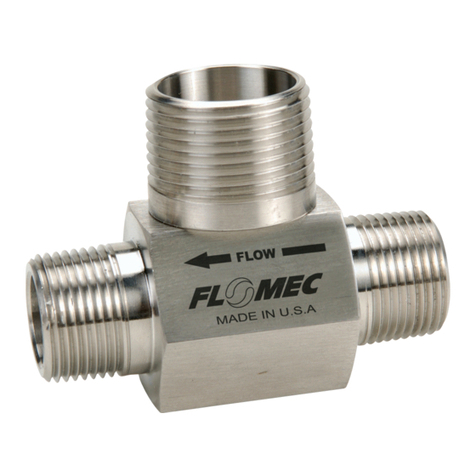
Flomec
Flomec G Series User manual

Flomec
Flomec QS200 User manual
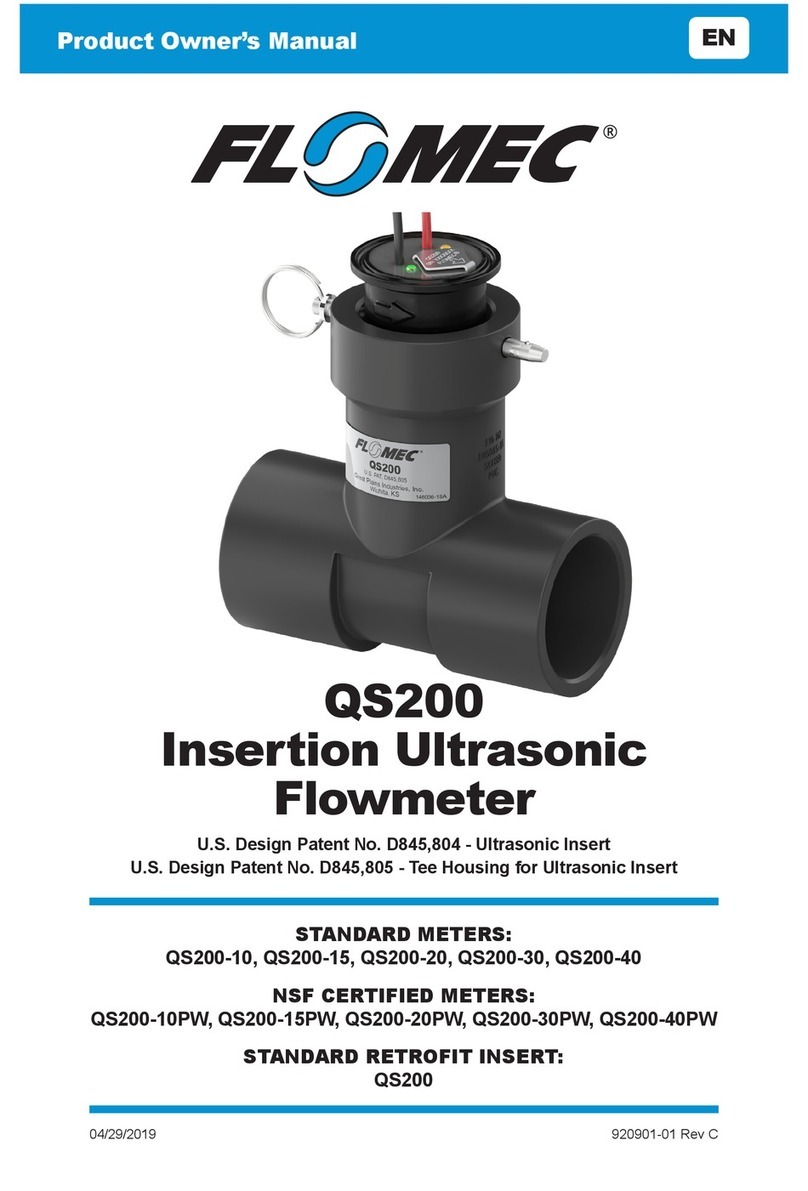
Flomec
Flomec QS200 User manual
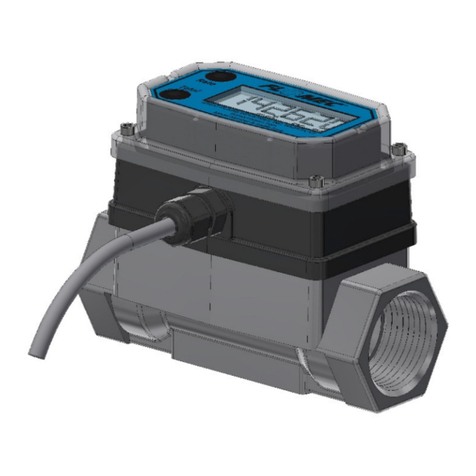
Flomec
Flomec TM Series User manual
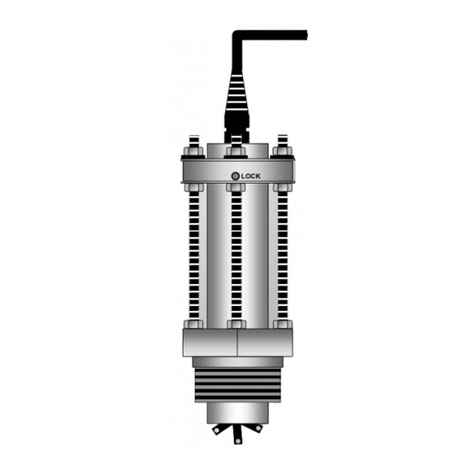
Flomec
Flomec 490 User manual
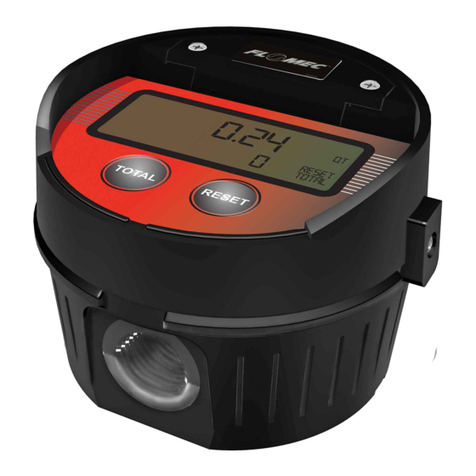
Flomec
Flomec LM51DN User manual
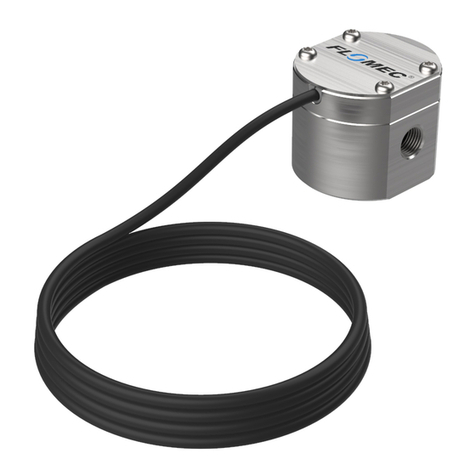
Flomec
Flomec EGM Series User manual
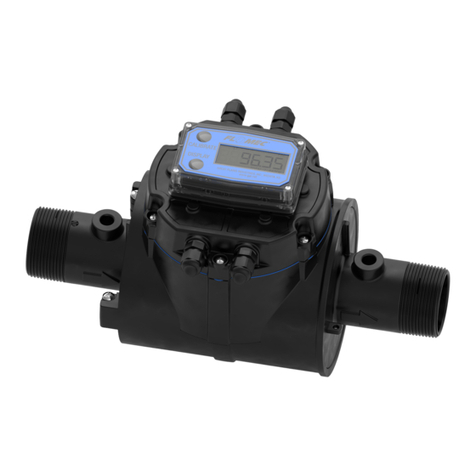
Flomec
Flomec QSE Series User manual
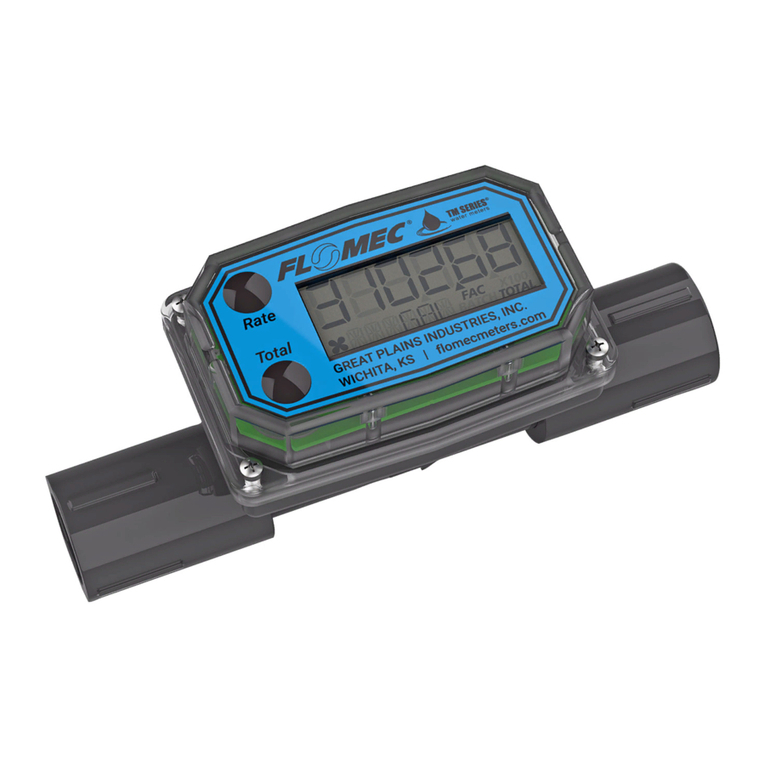
Flomec
Flomec Q9 User manual

Flomec
Flomec TM Series User manual
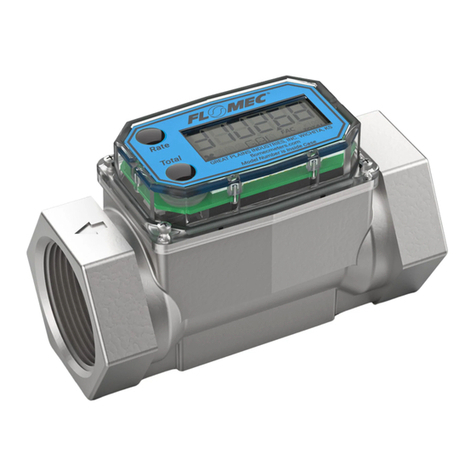
Flomec
Flomec G2 User manual

Flomec
Flomec QS200 User manual
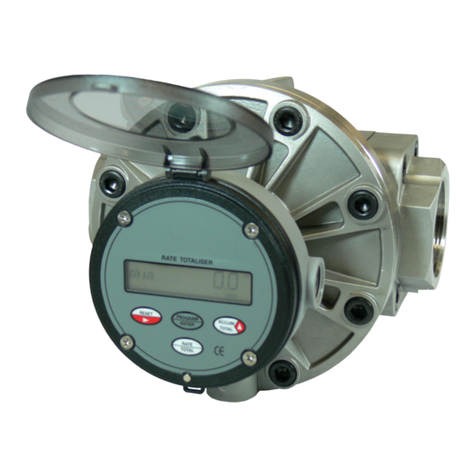
Flomec
Flomec OM025 User manual

Flomec
Flomec QS200 User manual

Flomec
Flomec Q9 User manual
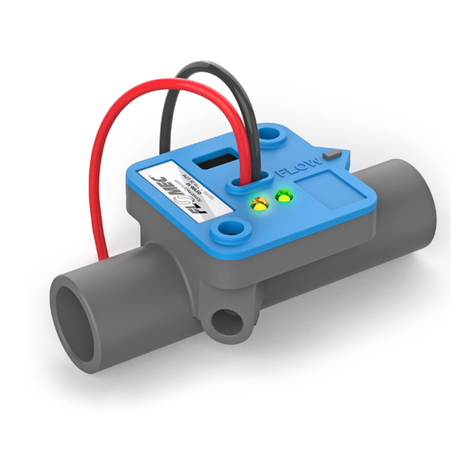
Flomec
Flomec QS100-10 User manual
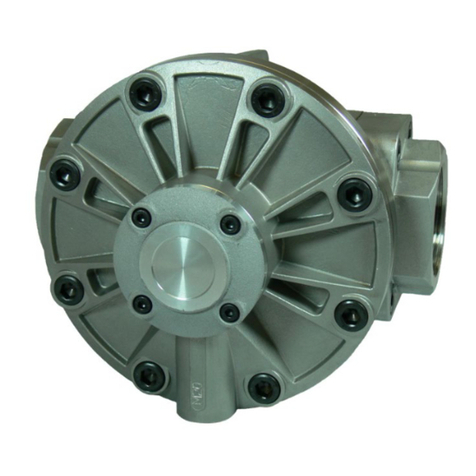
Flomec
Flomec Oval Gear User manual

Flomec
Flomec QSE Series User manual

Flomec
Flomec QSE Series User manual
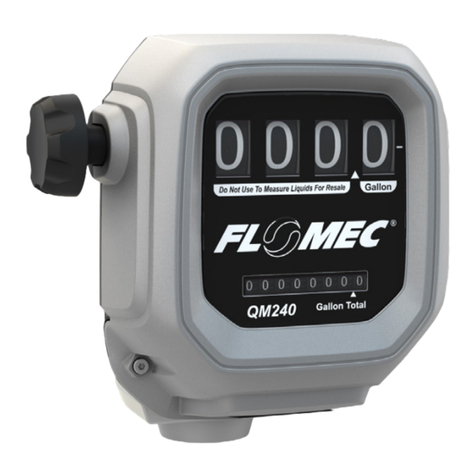
Flomec
Flomec GPRO QM Series User manual

